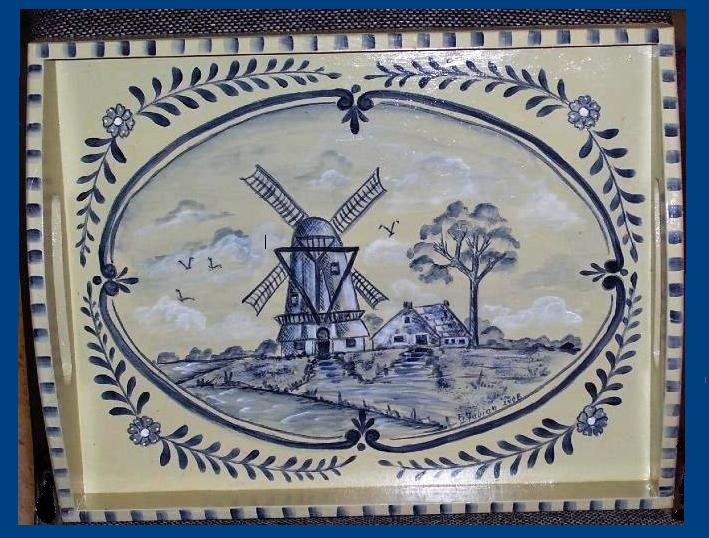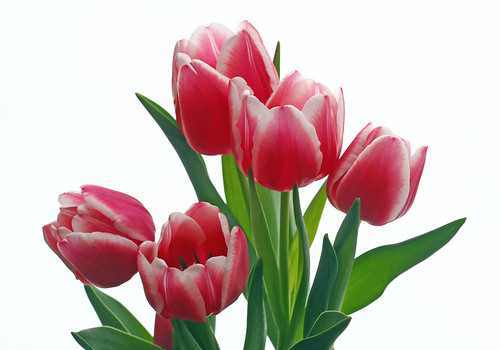Delft
Taught By Betty Fabian
November 8, 2008
 Return to Home Page
Return to Home Page
 Delft...The name ‘Delft’ is actually a derivative of the Dutch word ’delft’ meaning canal.
The Delft Style
The town where Johannes Vermeer and the famous blue Delft china were born, the city of Delft is located in southern Holland halfway between Rotterdam and The Hague and dates from the 13th century. This ancient city has been the birthplace of several important artistic contributions.
The Netherlands are situated on the North Sea, and there are several coastal towns. Because of the geography of the land, being below sea level, it is divided by canals connecting the city by streets and bridges. The name ‘Delft’ is actually a derivative of the Dutch word ’delft’ meaning canal. It was an important town in the 17th century, full of life, wealth, art, and thriving businesses. It was not as populated as the larger centers such as Amsterdam or Rotterdam.
In the beginning of the century, Delft was actually a beer brewing town with more than 100 breweries. But around the latter part of the century that industry declined for various reasons. But the Dutch being as industrious as they are, the turned things around, and established a new industry: the manufacture of ‘Delft Blue’ china.
We so often think of Delft ware as blue and white, but red, black, and other colors were and are also used. During this same period the city was a center for many master artists, Vermeer being the most famous. But in 1654 Delft suffered a terrible tragedy when a gunpowder storage building exploded. Known as the ‘Delft Thunderclap’ the damage was extensive. Hundreds of buildings and streets were destroyed, every structure in the city suffered some damage, and the death toll was in the hundreds. Whether the Delft Thunderclap was the cause or not, it seems that since the explosion, the artistic community began to shrink, with many artists leaving Delft. Vermeer of course remained and was active in the painters Guild of St, Luke. In spite of its decline as a center of art, Delft remained an important city that many artists visited especially to study the many fine art collections housed there.
Delft ware is a style of pottery that falls under the category of tin-glazed. The pottery style was born from several influences. The Netherlands was a hub of trade and sea merchants. Several exotic imports were brought into the country from afar. One such company which did a lot of trading was one by the name of the ‘Dutch East India Company’ who imported Chinese porcelains from China. As we know the Chinese porcelain was blue and white and was very beautiful. The Chinese created these beautiful designs with blue under glazes, to supply wealthy Arabs from Persia. The pigment ‘cobalt oxide’ an inorganic compound, necessary to create the blue color was found in Persia and supplied to the Chinese.
The Portuguese were among the first Europeans to import Chinese procaine during the 1600’s followed by the Dutch and the English. One of the most famous of the patterns was the ‘Blue Willow’ made popular by the English in the 1700’s. See the photo immediately to the left (plate with teacups and saucer.)
During the Golden Age of Dutch painting, Chinese porcelain was highly sort after by wealthy collectors, so local Dutch potters worked to reproduce and mimic these to make it more affordable to the average person. They began experimenting with glazes and eventually refined the technique in the late 1800’s. They found the blue color on a white background was more pleasing to the eye. As for changing the motifs, they began using local Dutch scenes for their designs and images of windmills, people dressed in customary Dutch clothing, the seashore and coastal vignettes etc. There were many small pottery works owned by local artisans, but most of them went out of business towards the end of the nineteenth century because less expensive ceramics became more popular. Today one company specializes in Delftware called the ‘De Koninklijke Porceleyne Fles’ this is stamped on their original Delft pieces.
Painted Delft designs (see the image of the painted antique ice skate above) have become popular amongst contemporary decorative artists; these are not fired and include using layering techniques and detailed liner work. Great attention is paid to technical brush control and understanding how to work with transparent applications while using one monochromatic color scheme.
Delft...The name ‘Delft’ is actually a derivative of the Dutch word ’delft’ meaning canal.
The Delft Style
The town where Johannes Vermeer and the famous blue Delft china were born, the city of Delft is located in southern Holland halfway between Rotterdam and The Hague and dates from the 13th century. This ancient city has been the birthplace of several important artistic contributions.
The Netherlands are situated on the North Sea, and there are several coastal towns. Because of the geography of the land, being below sea level, it is divided by canals connecting the city by streets and bridges. The name ‘Delft’ is actually a derivative of the Dutch word ’delft’ meaning canal. It was an important town in the 17th century, full of life, wealth, art, and thriving businesses. It was not as populated as the larger centers such as Amsterdam or Rotterdam.
In the beginning of the century, Delft was actually a beer brewing town with more than 100 breweries. But around the latter part of the century that industry declined for various reasons. But the Dutch being as industrious as they are, the turned things around, and established a new industry: the manufacture of ‘Delft Blue’ china.
We so often think of Delft ware as blue and white, but red, black, and other colors were and are also used. During this same period the city was a center for many master artists, Vermeer being the most famous. But in 1654 Delft suffered a terrible tragedy when a gunpowder storage building exploded. Known as the ‘Delft Thunderclap’ the damage was extensive. Hundreds of buildings and streets were destroyed, every structure in the city suffered some damage, and the death toll was in the hundreds. Whether the Delft Thunderclap was the cause or not, it seems that since the explosion, the artistic community began to shrink, with many artists leaving Delft. Vermeer of course remained and was active in the painters Guild of St, Luke. In spite of its decline as a center of art, Delft remained an important city that many artists visited especially to study the many fine art collections housed there.
Delft ware is a style of pottery that falls under the category of tin-glazed. The pottery style was born from several influences. The Netherlands was a hub of trade and sea merchants. Several exotic imports were brought into the country from afar. One such company which did a lot of trading was one by the name of the ‘Dutch East India Company’ who imported Chinese porcelains from China. As we know the Chinese porcelain was blue and white and was very beautiful. The Chinese created these beautiful designs with blue under glazes, to supply wealthy Arabs from Persia. The pigment ‘cobalt oxide’ an inorganic compound, necessary to create the blue color was found in Persia and supplied to the Chinese.
The Portuguese were among the first Europeans to import Chinese procaine during the 1600’s followed by the Dutch and the English. One of the most famous of the patterns was the ‘Blue Willow’ made popular by the English in the 1700’s. See the photo immediately to the left (plate with teacups and saucer.)
During the Golden Age of Dutch painting, Chinese porcelain was highly sort after by wealthy collectors, so local Dutch potters worked to reproduce and mimic these to make it more affordable to the average person. They began experimenting with glazes and eventually refined the technique in the late 1800’s. They found the blue color on a white background was more pleasing to the eye. As for changing the motifs, they began using local Dutch scenes for their designs and images of windmills, people dressed in customary Dutch clothing, the seashore and coastal vignettes etc. There were many small pottery works owned by local artisans, but most of them went out of business towards the end of the nineteenth century because less expensive ceramics became more popular. Today one company specializes in Delftware called the ‘De Koninklijke Porceleyne Fles’ this is stamped on their original Delft pieces.
Painted Delft designs (see the image of the painted antique ice skate above) have become popular amongst contemporary decorative artists; these are not fired and include using layering techniques and detailed liner work. Great attention is paid to technical brush control and understanding how to work with transparent applications while using one monochromatic color scheme.
